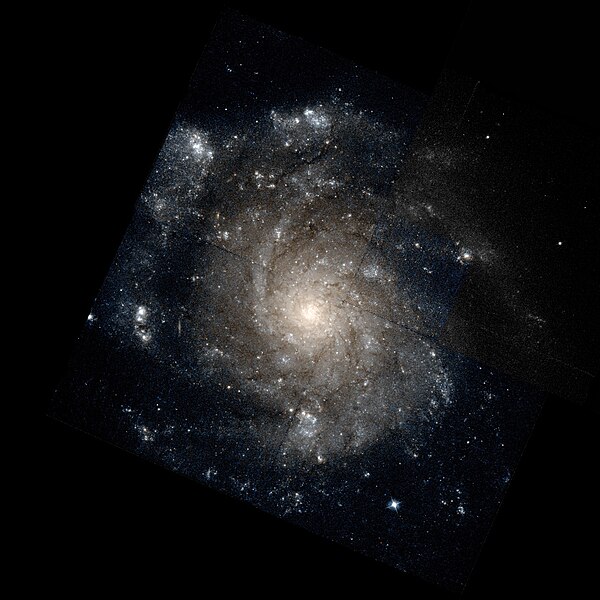The New General Catalogue of Nebulae and Clusters of Stars (abbreviated as NGC) is a catalogue of deep-sky objects compiled by John Louis Emil Dreyer in 1888. The NGC contains 7,840 objects, known as the NGC objects. It is one of the largest comprehensive catalogues, as it includes all types of deep space objects, including galaxies, star clusters, emission nebulae and absorption nebulae.
Know more about NGC
NGC 3423

NGC 3423 is a spiral galaxy in the constellation Sextans. The galaxy lies about 45 million light years away from Earth, which means, given its apparent dimensions, that NGC 3423 is approximately 50,000 light years across. It was discovered by William Herschel on February 23, 1784. NGC 3423 is an unbarred galaxy seen nearly face-on. The galaxy has a low-surface-brightness disk. The galaxy has multiple spiral arms, at least six, with numerous HII regions all over the disk. The largest of them are about 2 arcseconds across. H-alpha emission is stronger at inner part of the disk. The star formation rate is estimated to be 0.7 M☉ per year. One supernova has been observed in NGC 3423, SN 2009ls. It was discovered on 23 November 2009 by Koichi Nishiyama and Fujio Kabashima at an apparent magnitude of 15.3. Its spectrum revealed it was a young type II supernova. Another transient observed in the galaxy, AT 2019ahd, has been identified as a luminous blue variable in outburst. NGC 3423 is the foremost galaxy of the NGC 3423 Group, which also includes MRK 1271. Other nearby galaxies include NGC 3365, NGC 3495, and NGC 3521. During the March 2026 lunar eclipse, a total lunar eclipse, it will be occulted by the Moon over North America.: 161
More Images:

Sources:
Wikipedia Page: NGC 3423
NGC 3423 at In-The-Sky website
